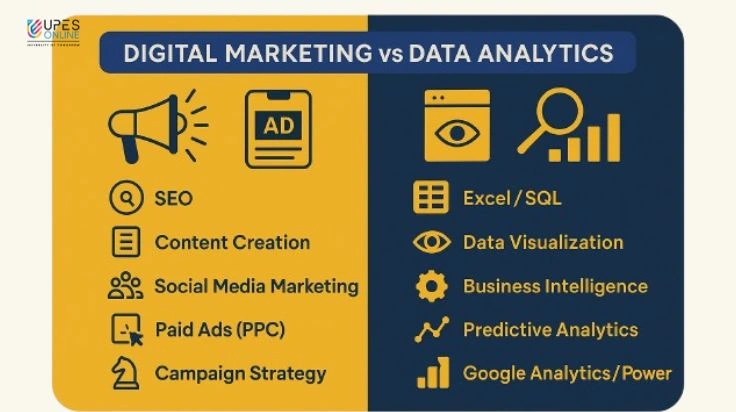Digital Business Models: Unique Ideas for Inspiration

Table of Contents
- What is Digital Business
- Types of Digital Business Models
- Examples of Digital Business Products
- How to start a Digital Business?
- Challenges and Considerations
In recent years, the digitalization of business has rapidly transformed the way companies operate and interact with their customers. The advent of technology has made it easier for businesses to reach their target audience, offer personalized services, and streamline their operations.
As a result, digital business has become an integral part of today’s world, enabling companies to innovate and grow at an unprecedented pace.
What is Digital Business?
Digital business refers to using digital technologies to create new business models, products, and services or to transform existing ones. It involves leveraging technology to streamline processes, improve customer experience, and drive business growth.
Digital business encompasses various industries and sectors, from e-commerce and retail to healthcare, finance, and entertainment. With the increasing ubiquity of digital technology, digital business has become essential to modern business strategy. By harnessing the power of technology, companies can reach wider audiences, offer more personalized services, and adapt more quickly to changing market conditions.
Digital business examples refer to innovative and technology-driven ideas across various industries that utilize digital platforms to provide better customer experience, streamline operations, and create new business models.
Importance of Effective Business Models in the Digital Age
Effective business models are the cornerstone of success in the digital age. Build on a well-laid strategy, these models solve complex modern-day problems by using advanced technologies and growing customer needs. An effective business model is one which not only has a strong foundation but also the ability to re-strategize in the age of digital disruption leading to consistent revenue streams, innovation to stay competitive, and delivering exceptional value.
Types of Digital Business Models & Examples
Digital business models refer to companies using digital technologies to generate revenue and create value. Here are four common types of digital business models:

1. E-commerce:
E-commerce involves selling goods and services online, typically through a website or mobile app. This model can range from a simple online store to a complex marketplace that connects buyers and sellers. Let’s discuss types of e-commerce business models.
1.1 Direct-to-Consumer (DTC) Model
Selling products directly to consumers is referred to as Direct-to-consumer model. DTC models enhance customer experience, provides data-driven insights and directly interacts with customers.
Example: Mamaearth is a DTC model selling products through its online platform directly to its customers.
1.2 Subscription Model
A model in which a business asks customer to pay a recurring fee (monthly, annually) to access its products and services. Subscription model builds customer loyalty, predictability, and offers a personalized experience.
Example: Netflix uses a monthly subscription model that enable users to access its streaming services.
1.3 Marketplace Model
Marketplace models are online e-commerce platforms where multiple sellers and buyers come together under one roof. These models offer a diverse range of products and services to be exchanged and offer unparalleled variety, competition, and convenience for consumers, while providing sellers access to a broader customer base. The use of technology enables smooth transactions, optimize product search, and facilitate secure payments.
Example: Amazon and Flipkart use this model.
2. Data-driven Models
In digital business, data-driven models involve leveraging data and analytics to make informed decisions and optimize various aspects of operations. This data leads to strategic choices, such as personalized marketing campaigns, product suggestions, and process enrichments. Data-driven models helps businesses tweak their products to specific audiences, improving customer satisfaction and engagement.
2.1 Advertising Model
Advertising-based models involve generating revenue by displaying ads to website or app users. This model can be used for free social media or online news services.
Example: Google
2.2 Data Monetization Model
The exchange of data-driven insights is what is called as a Data Monetization Model. By collecting, analysing, and anonymizing customer data, organizations can offer valuable insights to third parties, such as advertisers, marketers, or researchers making sure they prioritize transparency and user consent.
Example: Facebook
3. Subscription & Membership Model:
Subscription-based services involve providing access to content, software, or services for a recurring fee. This model can offer recurring revenue and build long-term customer relationships.
3.1 SaaS (Software as a Service) Model
SaaS involves providing software applications over the Internet for a monthly or annual fee. This model can provide a predictable revenue stream and reduce the need for on-premises software and hardware.
Example: Salesforce is a software platform that offers its services to business and customers for a paid subscription.
3.2 Premium Content Model
Being a part of subscription-based models, a Premium content model serves users with exclusive high-value in-depth content, such as articles, videos, courses, or tools, to attract users in exchange for a subscription fee or one-time payment. This model also builds a loyal customer community and credibility.
Example: The New York Times & LinkedIn uses this model by offering premium in-depth content, insights, and expert-driven resources.

4. Sharing Economy Models
As the name suggests, sharing economy models are shared and accessed on digital platforms. These platforms connect consumers seeking goods and one who can provide them. These models promote resource optimization, affordability, and convenience.
4.1 Peer-to-Peer (P2P) Model
Peer-to-Peer (P2P) model is one where there is no-third party involvement and where customers can directly engage with one another to share resources, services, and information through online platforms making it readily available to users. Peer to Peer Model establishes user-driven ecosystem that works on trust, quality assurance and connectedness.
Example: Etsy, an online platform that enables direct selling and purchasing of goods from individuals.
4.2 On-Demand Model
On-demand model means getting goods and services available to users on-demand. The model concentrates on convenience, instant gratification, and user-centric experiences. They leverage real-time data and location tracking to fulfil needs swiftly. But the major challenge is to ensure supply-demand balance and maintaining service quality at the same time.
Example: Doordash allows users to order food on-demand within a few clicks.
5. Platform Models
A platform model can be called as a matchmaker as it brings together supply and demand in a seamless online environment. It is a digital ecosystem that enables interactions between different sides, connecting producers and consumers, service providers and users, or even peers within a marketplace. Revenue for these type of models works in such a way that models capitalize on network effects, where the value of the platform increases as more participants join, creating a clean cycle of growth.
5.1 Freemium Model
A freemium model is one which combines both the free offerings and paid subscriptions. Under these platforms, users are attracted with basic services but are often lured with advanced features through paid subscriptions.
Example: Spotify – has a free and premium plan model.
5.2 Two-Sided Marketplace Model
A 2-sided marketplace is a platform which connects two groups and enables transaction between them. The best example of a two-side marketplace model is Uber which connects drivers to riders.Example: Airbnb – As a platform, Airbnb connects guest and hosts during property renting, exchanging.
5.3 App Store Model
Synonym to its name, an App Store model provides developers with a platform where they can showcase their applications to users.
Example: Apple App Store & Google Play Store are the two most popular app store platform of our generation.
6. Hybrid Models
Hybrid models are a combination of traditional models infused with digital elements. They bridge the gap between different business approaches, enabling companies to offer unique value propositions that cater to a wider range of customer needs. These models combine different revenue streams, capitalize on emerging technologies, and respond to shifting market trends.
6.1 Direct-to-Consumer + Subscription
A direct-to-consumer sale is a perfect example of hybrid model. This model combines e-commerce with subscription services or integrate a brick-and-mortar presence with an online marketplace. This not only maximize revenue streams but also enhance customer engagement and satisfaction.
Example: Dollar Shave Club
6.2 Marketplace + Subscription
A hybrid approach where a business leverages e-commerce power and combines it with recurring subscription service.
Example: Amazon – Being an extensive marketplace has expanded its offering with subscription-based models like Free delivery with Amazon Prime subscription which gives them recurring revenue and its costumers gain value, convenience, and exclusivity.
By understanding these digital business models, companies can choose the model that best aligns with their goals and target audience and leverage technology to drive business growth.
5 examples of digital business products include:
- Online learning platforms
- Mobile apps
- Cloud-based software
- E-books
- Digital Marketing Services.
How to Start a Digital Business?
Starting a digital business may seem daunting, but it can be a rewarding and profitable venture with the right approach.
A digital business view includes a strategic focus on leveraging technology to optimize customer experience, streamline operations, and create new business models that generate value and drive growth.
A survey by McKinsey found that 79% of B2B buyers prefer digital self-service for reordering, while 83% say they would buy online if the purchasing process were simplified.
Here are some key steps to get started:
Identify the market demand:
Find out if there is a demand for your product or service on the market. Look at industry trends, customer behavior, and competition to better understand your potential customers.

Choose a business model:
Decide on a business model that aligns with your goals and target audience. Standard digital business models include e-commerce, subscription-based services, and software as a service (SaaS).
Create a website or app:
Develop a website or app that is user-friendly and reflects your brand identity. Make sure it is optimized for search engines and mobile devices.
Marketing and promoting the business:
Once your website or app is up and running, focus on marketing and promoting your business to reach your target audience. Social media and search engine optimization (SEO) can drive traffic to your website or app.
Following these steps can lay the foundation for a successful digital business. However, remember that digital business requires continuous learning, adapting, and innovation to stay competitive and meet evolving customer needs.
Key Success Factors & Concepts of Digital Business
In the digital era, businesses must adopt new thinking methods to succeed in a constantly evolving landscape. Here are four concepts of digital business that can help organizations stay competitive:
- Customer-Centric Approach- A customer-centric approach means putting the customer at the centre of every decision, from product development to marketing and sales. It involves understanding customer needs and preferences and using data and analytics to personalize the customer experience.
- Scalability and Flexibility- Scalability, innovation, and agility are essential to staying ahead of the competition. Digital businesses must constantly innovate and adapt to changing market conditions and customer needs. This means being open to experimentation and taking calculated risks.
- Value Proposition, Differentiation & Data Driven Decisions- Data is an asset for digital businesses. Organizations can gain insights into customer behaviour, market trends, and operational performance by collecting and analyzing data. This information can be used to make informed decisions that drive business growth.
- Digital Marketing Strategies- Digital transformation involves using technology to fundamentally change how a business operates, often focusing on improving efficiency, agility, and customer experience.
By embracing these four concepts, digital businesses can stay ahead of the curve and deliver value to customers in an increasingly digital world.

Challenges and Considerations
- Data Privacy and Security- Privacy and data security concerns are very important in digital business models and require robust measures to ensure trust. Protecting sensitive user information from cyber threats along with it ensuring compliance with data protection regulations like GDPR and CCPA. Implementing robust encryption, authentication protocols, and cybersecurity measures is essential to thwart potential breaches.
- Competition and Market Saturation- Intense competition, entry of new players demands continuous innovation and differentiation to stand out. Scalability is essential for accommodating growing user bases. offering unique value propositions and exceptional user experiences. Strategic partnerships, niche targeting, analysing market trends, consumer preferences and diversification can provide an edge. Adapting to these changes and the needs of the market will help businesses thrive in this intensely competitive market.
- Technological Innovation and Adaptation- One major challenge that businesses face in the ever-changing world of digital business is adapting to advanced technology and continuous innovation. Emerging technologies like AI, blockchain, and IoT requires substantial investment and expertise and integrating it with existing systems. Balancing innovation with user expectations and avoiding tech overload is critical. Technologies also helps predict what will add long-term value which is another layer of complexity. Businesses need to pivot quickly to transformative technological changes.
Summary
Embracing Digital Business Models for Future Success
The digitalization of business has opened new opportunities for innovation and growth across various industries. From e-commerce and online education to healthcare and finance, digital business examples abound today. However, to succeed in digital business field, adopting a customer-centric approach, prioritizing digital transformation, fostering innovation and agility, and making data-driven decisions are essential.
Constant Evolution in the Digital Business Landscape
Digital business management requires continuous learning, experimentation, and adaptation to stay ahead of the competition and meet customers’ evolving needs. By leveraging technology and adopting new ways of thinking, businesses can unlock new opportunities and deliver value to customers in the digital age.
UPES Online Admission Enquiry
Recommended Courses




Latest Blogs

Digital Marketing vs Data Analytics: Which Career Should You Choose?
Battle of skills: Digital Marketing vs Data Analytics—compare 2025 salaries, skills & job roles. Expert tips to choose your future career path!
Read MoreJun 15, 2025 I 12 mins
Why Should I Choose UPES Online? 10 Reasons Why
Explore why UPES Online stands out in online education. Learn about flexible learning, UGC-approved degrees, expert faculty & credible online programs. Enroll now!
Read MoreAug 21, 2025 I 5 min
Can Distance Learning Fully Replace Traditional MBA Education? Challenges & Limitations
Find out if distance learning can truly replace a traditional MBA. Learn key challenges, limitations, expert opinion & insights.
Read MoreSep 2, 2025 I 4 mins
Online MBA Capstone Projects and the Importance They Hold
Know the importance of online MBA capstone projects. Learn how they build real-world skills, boost career opportunities, & add industry value.
Read MoreSep 7, 2025 I 5 mins
UPES Online MBA vs Other Top Universities: Why Students Prefer UPES
Compare UPES Online MBA with other top universities. Know why students prefer UPES online over others. Check fee, flexibility, faculty, ROI, & career scope.
Read MoreOct 1, 2025 I 7 mins







